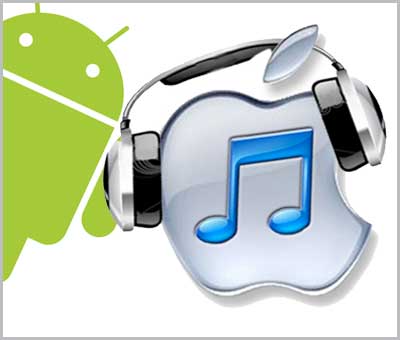Need to move your music from iTunes to Android, or even keep both synchronized? Here's how:
 Music is one of the few commodities in life that does not compromise. It’s something personal, that should be accessed at anytime, independently of hardware, software or location. It transcends platform allegiance, as long as we can play our music, wherever we are, and wherever we need it.
Music is one of the few commodities in life that does not compromise. It’s something personal, that should be accessed at anytime, independently of hardware, software or location. It transcends platform allegiance, as long as we can play our music, wherever we are, and wherever we need it.
Some of us are all-Apple, some of us are all-Android, and some find themselves in between. No matter where we stand, whether we are iTunes or Google Play Music users, there are quite a few ways to keep those beats within reach.
A desktop platform is necessary as liaison between your devices, whether it’s a Mac or a PC:
The Mac OS X / PC method:
Moving songs from iTunes to an Android device on a Mac or PC is fairly easy. The two popular ways to accomplish this task are:
- The easy way with DoubleTwist
- The slightly harder way: direct file transfer
DoubleTwist has been dubbed “iTunes for Android”, and it’s a free app that allows to transfer music to an Android device from a Mac or PC. While DoubleTwist is geared primarily towards PC users, Mac users have the option of downloading a .DMG file. The link is available directly below the Windows download button on the DoubleTwist help page. A short while ago we published an easy tutorial on installing applications on a Mac, that includes an explanation of DMG files.
DoubleTwist works in two ways, by either connecting the android device to a Mac or PC via USB cable, or over WiFi. WiFi connection requires purchase of DoubleTwist Pro, which includes AirSync, while transferring files over USB is free. In either cases, the DoubleTwist App needs to be installed on the target Android device as well.
Besides DoubleTwist, another option is to transfer files directly from the iTunes folder on the Mac, into the target Android device. This step requires the device to be able to connect via USB as Media Device (MTP). Devices like the Samsung Galaxy Note 3 and similar, support USB 3.0.
When enabling USB 3.0 mode, the target device will automatically switch on airplane mode. This allows the device to communicate without interruptions caused by incoming calls or messages.
Once USB 3.0 is active, the phone will be seen by the system as simply another accessible hard drive. Music can be stored anywhere, but should be in a folder that is easily accessible by music apps, as needed. Treading lightly goes without saying, especially since system files will likely be accessible.
The Google Way
With the multitude of data plan offerings available, many users are turning to the cloud for their music storage needs. Google Play enables users to store and access up to 20,000 songs for free, no matter the size per single upload.
Syncing music between iTunes and Google Play is cakewalk, whether you are on a Mac or a PC, thanks to the Google Play Music Manager app, available for Windows, Mac and Linux.
The application allows users to select any folder, including the iTunes music folder. Any song retrieved from that folder will be automatically added to Google Play. From then on, whether we are on iTunes or Google Play, we will have access to all our music playlists, wherever we are.